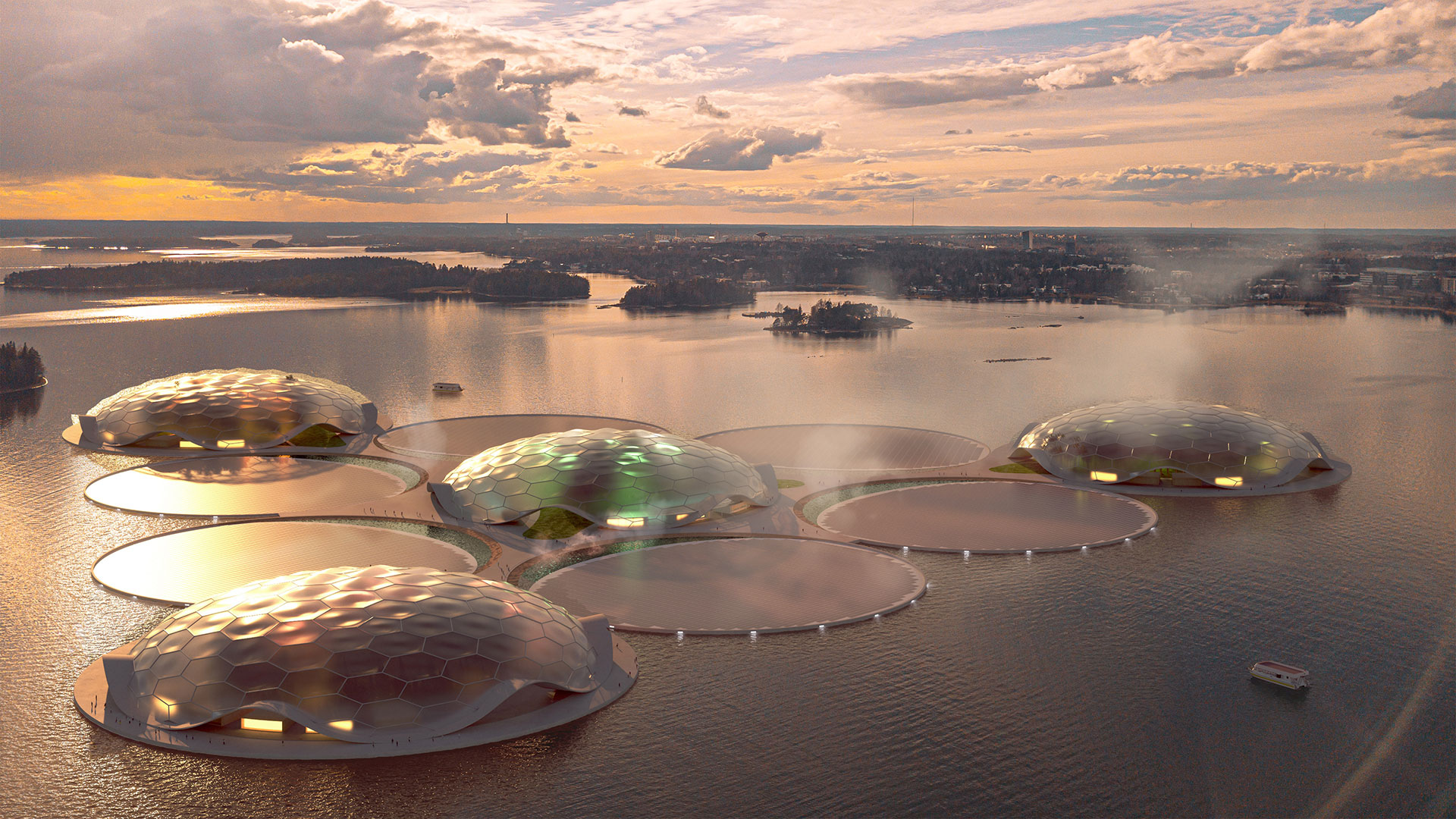The city of Helsinki, the capital of Finland, recently decided on the winning project for its Energy Challenge, which aims to decarbonise the entire city’s heating system by 2030. The chosen project, Hot Heart, is a design by the Italian architectural firm CRA-Carlo Ratti Associati, in collaboration with Ramboll, Transsolar, Danfoss Leanheat®, Schneider Electric, OP Financial Group, Schlaich Bergermann Partner and Squint/Opera. It consists of a series of artificial islands with the dual function of storing thermal energy and providing the city with a centre for leisure and recreational activities.
Located off the coast of Helsinki, the Hot Heart islands form a set of 10 cylindrical basins, each 225 m in diameter, with a capacity of 10 million m3 of water. The islands will function as a giant thermal battery; they will receive seawater heated by wind, solar and other forms of low-cost or even negative-cost renewable energy sources and store the heat in their reservoirs. Operated by artificial intelligence, the system will synchronise the production of thermal energy with its consumption, thereby stabilising the energy grid in relation to fluctuations in demand. When operational, the Hot Heart system will be the largest infrastructure of its kind in the world.
At the same time, four of the 10 hot water reservoirs will be covered by transparent domes to house “floating forests”, tropical ecosystems from the world’s major jungle areas, naturally conditioned by the basins below. They will therefore offer an additional public space and a new educational and leisure attraction for local residents and international travellers, even in the harsh Nordic winter.
As Carlo Ratti says, founder of CRA-Carlo Ratti Associati, “ production of renewable energy is getting cheaper, but storage is still extremely expensive“. So, the Hot Heart system will make it possible to use the artificial islands as “gigantic “thermal batteries” to store energy when prices are at low or even negative levels, and to extract it when required by the district heating system, when demand is high”. In addition, Carlo Ratti says that “this model would also be applicable to many coastal cities with similar climates“. The aim is that the system, when implemented in 2028, is expected to cover Helsinki’s heating needs, without carbon emissions and at an estimated cost 10% lower than today.










